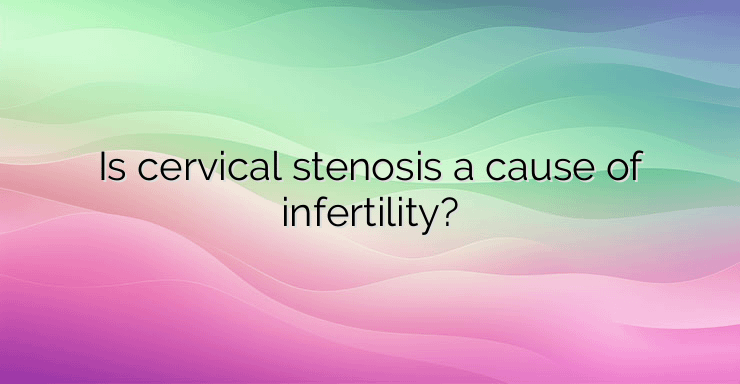Cervical stenosis is an uncommon but potential cause of female infertility. In cervical stenosis, the cervical opening is narrower than it should be and, in severe cases, can be completely closed. This can prevent sperm from reaching the egg and complicate fertility treatments such as insemination or IVF. To more easily understand how cervical stenosis can cause infertility, one must understand the anatomy of the cervix. At the end of the vaginal canal is the external axis or cervical opening. In a smear test, cells are taken from this location. However, this is only the outer part of the cervix. The cervical canal continues along the external axis, creating a sort of tunnel from the vagina to the uterus. The “tunnel” of the cervix is known as the endocervical canal. At the end of the endocervical canal is the internal axis or internal opening of the cervix. This is where the cervix ends and the uterus begins. Cervical stenosis can occur in any of these areas or even in all of them at once. The cervix plays several key roles in fertility and pregnancy: During menstruation, endometrial tissue exits the uterus through the cervix. This is the entry of sperm from the vagina up into the reproductive system. Contains mucus-producing tissue. Cervical mucus is needed to help sperm move efficiently up the cervix during ovulation and helps prevent infection and protect against unwanted microorganisms. During pregnancy, the cervix creates a mucus plug that protects the fetus. Cervical stenosis can negatively affect fertility, directly or indirectly in the following ways. Sperm passage is blocked or restricted. If the opening of the cervix is blocked or narrower than it should be, sperm cannot travel to the fallopian tubes (where they meet and fertilize the egg). Inflammation of the uterus and risk of endometriosis. Menstrual bleeding may be completely blocked (in severe cases) or retained and unable to flow out easily. This can cause the uterus to fill with blood, causing pain and inflammation. This is known as the hematometer. If an infection occurs, the uterus may fill with pus. The medical term for this is pyometra. Even if the cervix is slightly open and blood can flow out, menstrual blood can sometimes back up through the fallopian tubes, which can lead to endometrial lesions and endometriosis. Cervical stenosis is most often caused by scar tissue. The connective tissue of the scar can interfere with the production of cervical mucus. Sometimes the surgery that causes the scar involves the removal of cervical tissue and this further restricts the production of cervical mucus.Without proper cervical mucus, sperm can have trouble moving and surviving. References: 1. Chou B, Bohn JA, Mairs R. Acute abdominal pain caused by hematometra in an adolescent female: A case report. J Med Case Rep. 2016;10(1):369. doi:10.1186/s13256-016-1154-6 2. Li X, Li J, Ju X, Chen X, Wu X. Abdominal scar characteristics as a predictor of cervical stenosis after abdominal radical trachelectomy. Oncotarget. 2016;7(25):37755-37761. doi:10.18632/oncotarget.9318 3. Singh N, Gupta P, Mittal S, Malhotra N. Correlation of technical difficulty during embryo transfer with rate of clinical pregnancy.


Leave a Reply